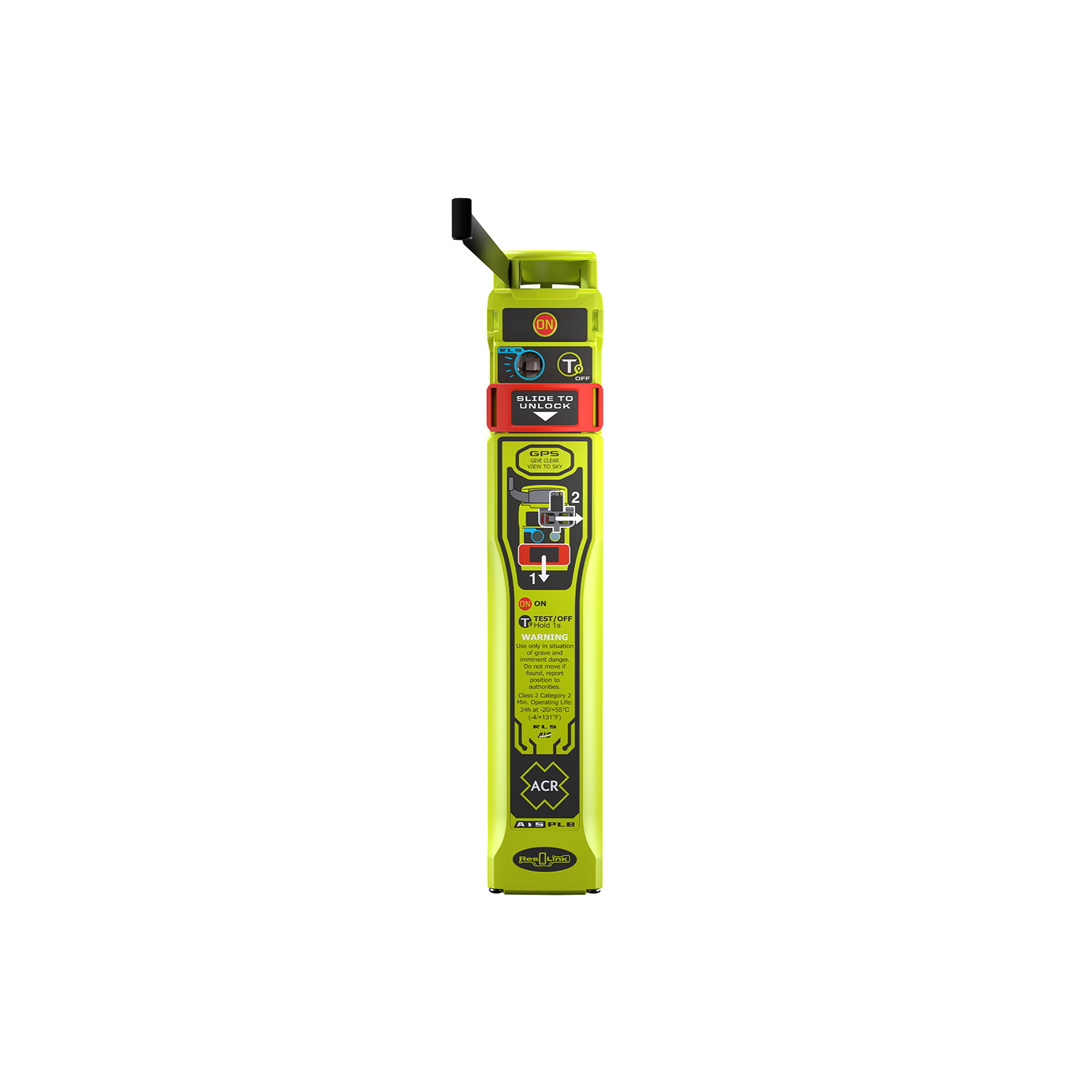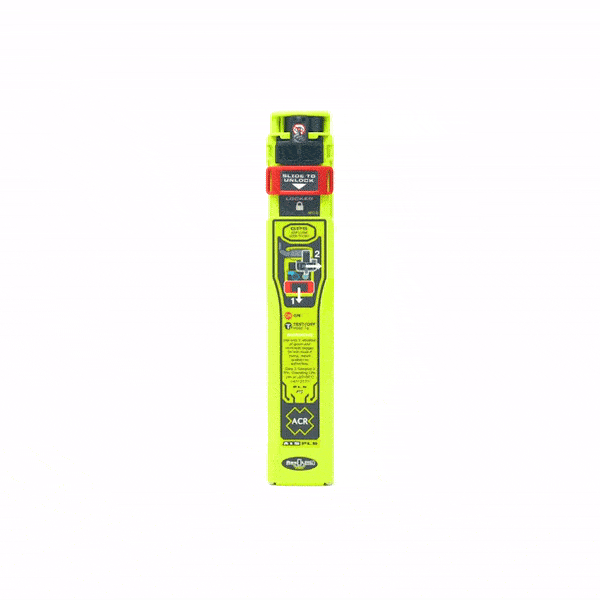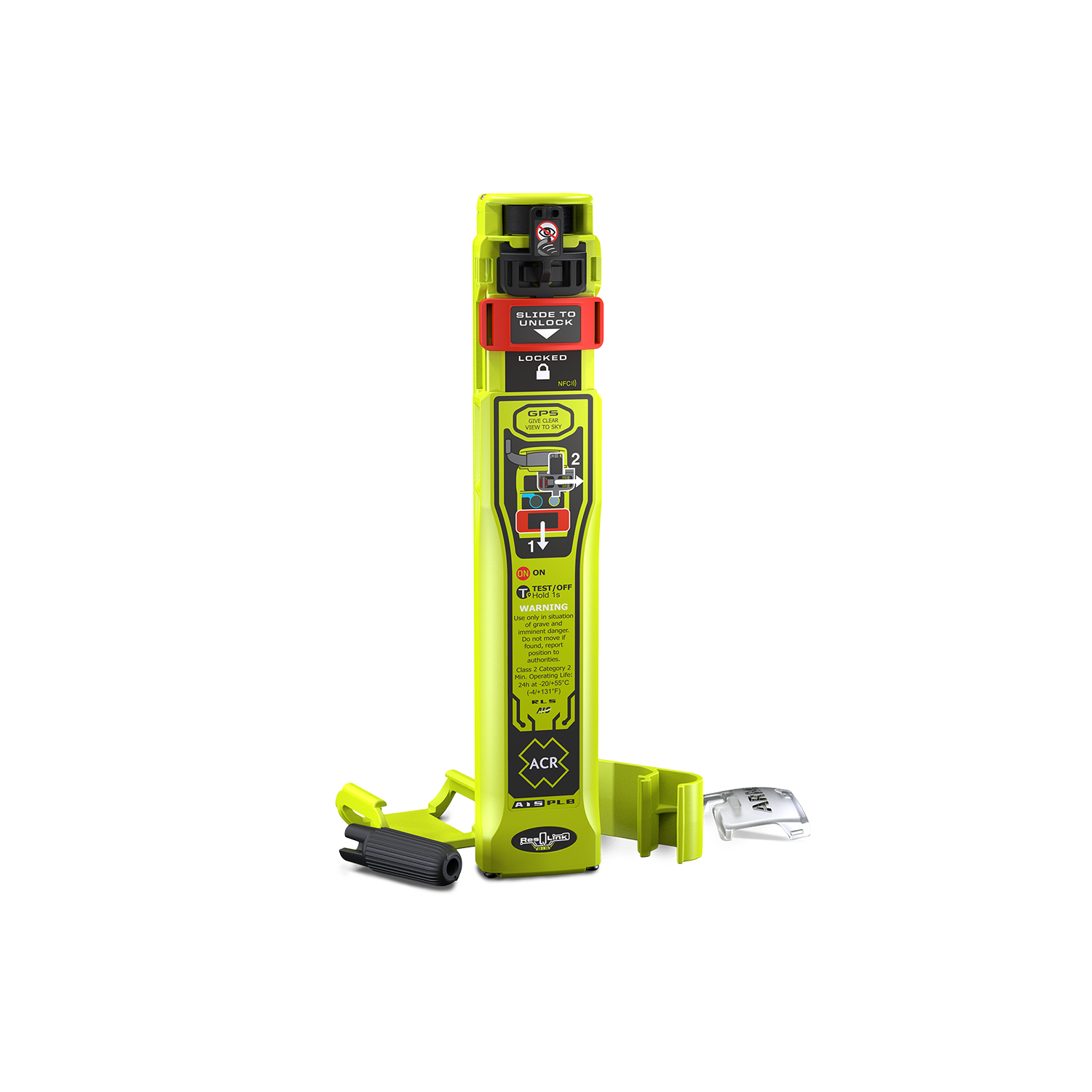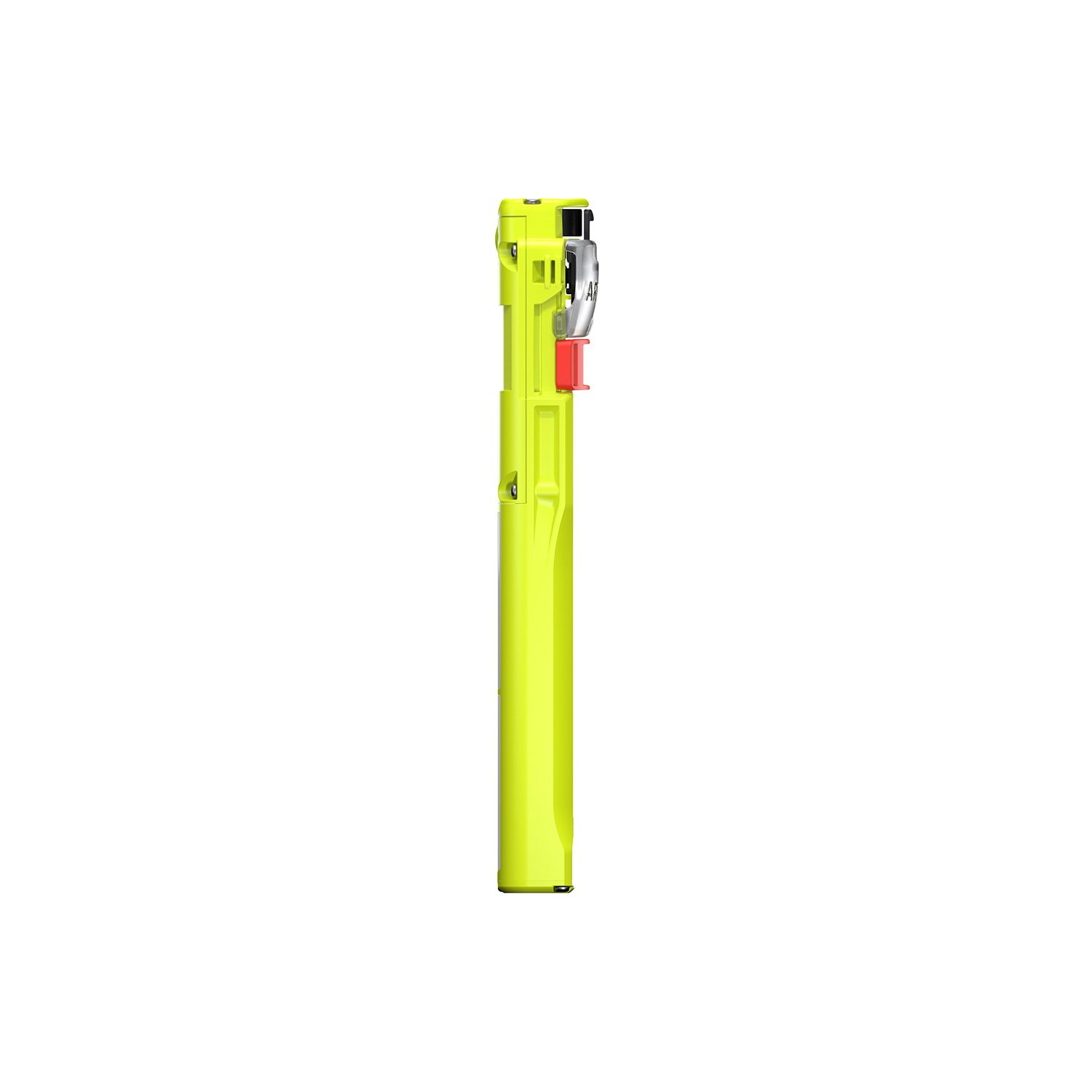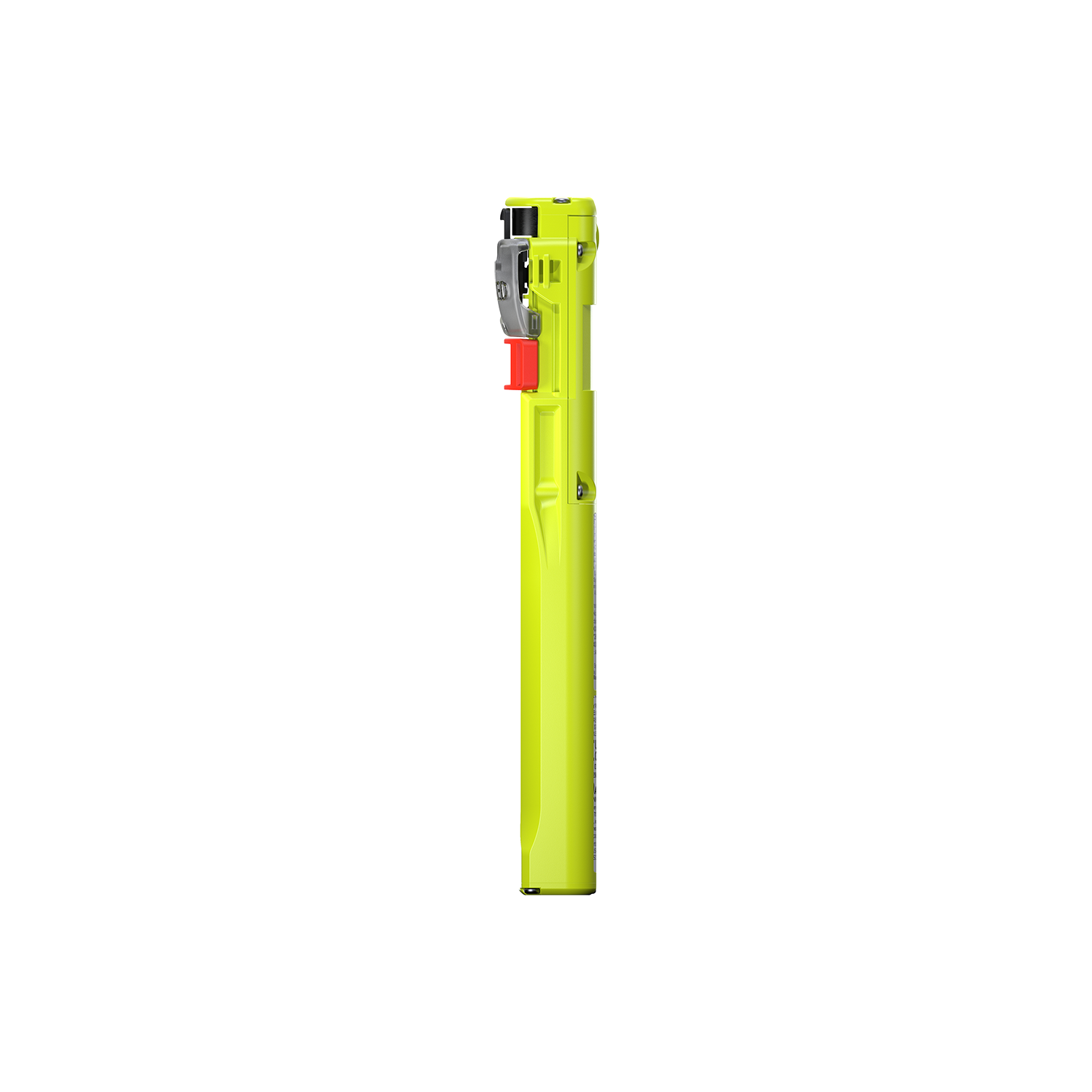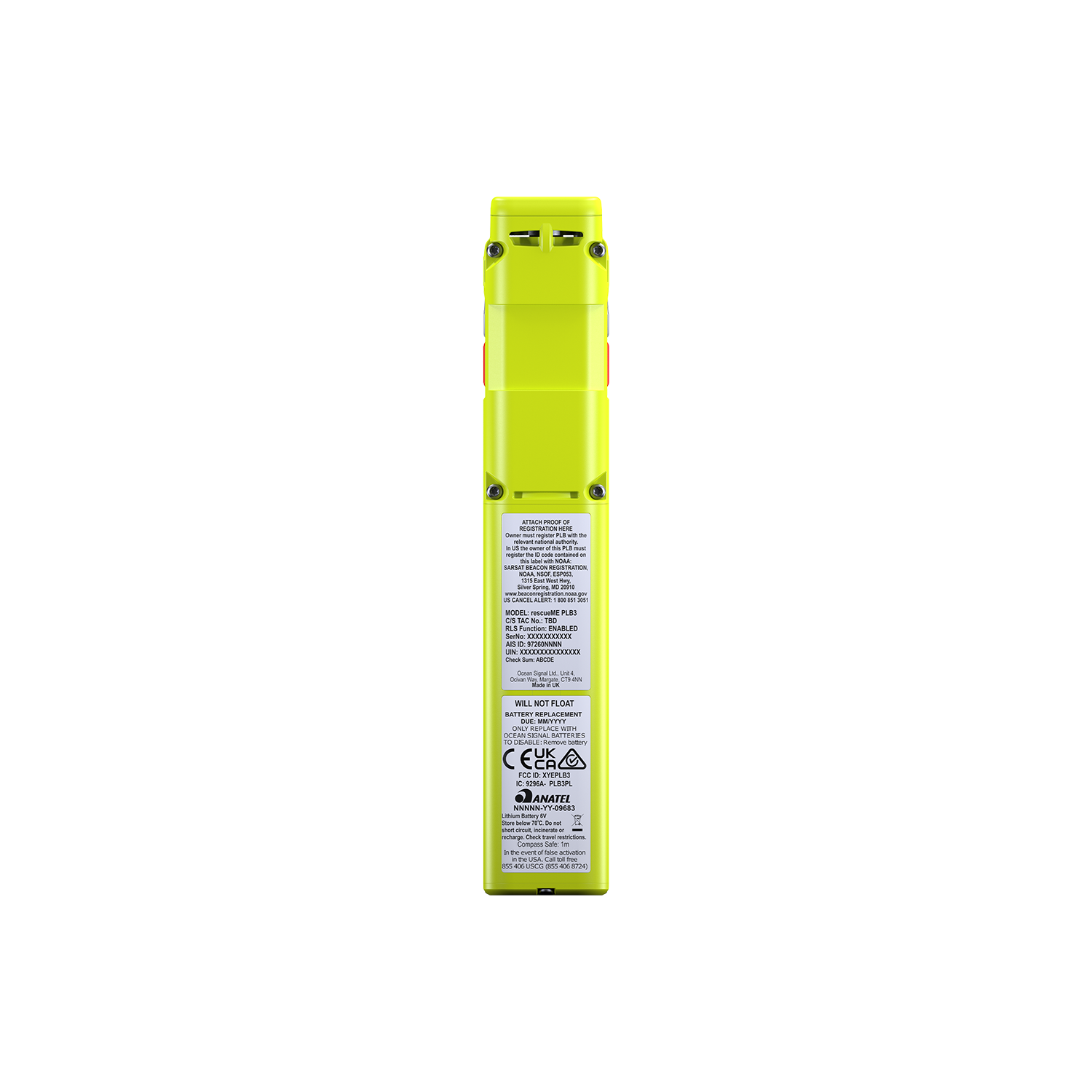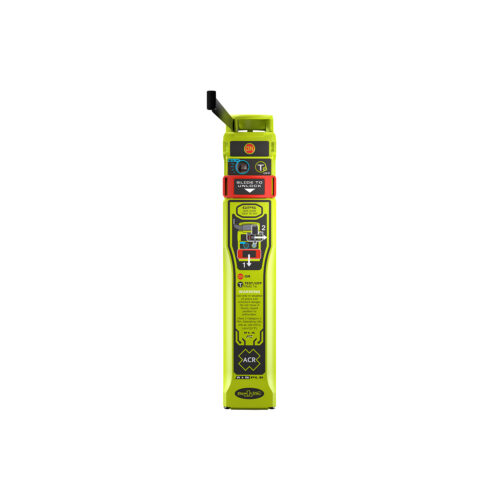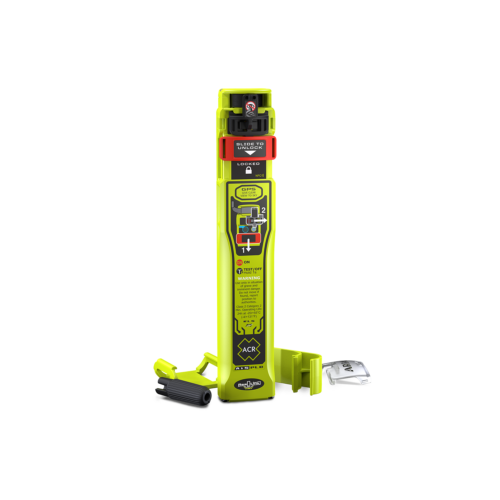ACR ResQLink AIS Personal Locator Beacon
$699.99
This compact high-tech Personal Locator Beacon is the world’s first PLB to include both AIS (Automatic Identification System) and NFC (Near Field Communication) in addition to standard satellite notification through the Cospas Sarsat rescue system.
In stock
The all new ACR ResQLink AIS Personal Locator Beacon (PLB) is the most technologically advanced beacon in the world as it contains both satellite and local transponders. With the introduction of Automatic Identification System (AIS) functionality, Return Link Service (RLS) technology, and Near Field Communication (NFC) capability in one 406 MHz beacon, the ResQLink AIS represents a critical advancement in the evolution of PLB technology.
The combination of 406 MHz and AIS distress messaging pairs both global and local rescue into one beacon for the first time, extending access to the Coast Guard and Search and Rescue as well as commercial and recreational boats in the area. Alerting local AIS equipped boats in your vicinity allows for additional vessels to respond directly to the digital mayday with your precise location.
In addition, NFC capability provides users with the world’s first smartphone connected Personal Locator Beacon, the new Return Link Service feature provides users with the peace of mind knowing that their distress message has been received and their location detected by Coast Guard.
ACR ResQLink AIS PLB Features & Benefits
- No Subscription Required
- 406 MHz Cospas Sarsat Distress Signal (MEOSAR Compatible)
- 121.5 MHz Local Homing Signal
- AIS (Automatic Identification System) Locating Signal
- Smartphone connectivity via NFC (Near Field Communication)
- Free ACR Beacon Mobile App (IOS and Android)
- Return Link Service (RLS) Functionality
- GNSS via GPS, Galileo, and Glonass
- Strobe and Infrared Strobe Light
- Global Coverage
- Simple PFD attachment
- Designed to Integrate with common Inflatable PFDs
- Multifunction Clip System Included
- Small and lightweight
- 5-yearbattery life
- Over 24 hours Operational Life
Pairing Global and Local Rescue
The Worldwide Cospas Sarsat satellite system includes 3 different constellations to ensure your 406 MHz distress signal immediately reaches the global network of Search and Rescue forces with your location accurate to within 100 meters. With multiple levels of integrated signaling technology including 406 MHz and GNSS (GPS, Galileo, Glonass) positioning, the PLB also transmits a 121.5 MHz homing signal which guides Search and Rescue services to the beacon’s current location when they arrive on the scene, as the beacon may have drifted from the originally transmitted position. The addition of AIS (Automatic Identification System) transmissions means the ResQLink AIS simultaneously alerts all vessels equipped with AIS transponders within the VHF radio range of the PLB’s distress position. This greatly increases both the likelihood and speed of rescue since nearby vessels receive the alerts. Immediately upon deployment of the beacon an AIS Safety Message or MOB Alarm with the beacon’s MMSI and location is presented on any AIS screen within range. This makes it easy for nearby vessels to home in on the beacon since it is an active AIS target on their screens.
The ResQLink AIS will light the way as rescuer arrive on scene with both a white visible strobe and infrared strobe providing rescuers with the visual reference they need during nighttime or other low visibility rescue operations.
Smartphone Connectivity utilizing Near Field Communication (NFC)
The integration of NFC technology provides users with the ability to conveniently access beacon data from their mobile phone. The simple act of placing a phone near the beacon automatically opens the ACR Product App and provides access to a wealth of usage data including current battery life, number of self-tests completed, number of GNSS tests completed, and if applicable, the amount of time the beacon has been activated. Detailed information on each self-test and GNSS test performed by the beacon is also available if desired. For each successful GNSS test, users can view a map showing exactly where the test was performed, the date and time of the test, the time it took the beacon to get a fix on your GNSS coordinates, the number of satellites the beacon used to obtain that fix, and the accuracy of the location.
Return Link Service (RLS)
RLS functionality works by sending a signal back through the Galileo satellite network to confirm to the beacon user that their distress message has been received and their location has been detected by the Coast Guard. A confirmation message is distinctly indicated by a flashing blue light on the PLB. Like other ACR beacons that include the important RLS feature, the ResQLink AIS provides the comfort of knowing that a distress message has been successfully delivered. Understanding that rescuers are aware of the beacon transmission and location reduces the stress often associated with Man Overboard incidents.
PFD Compatibility and Integration
The ResQLink AIS is designed to install within a life jacket and activate upon inflation of the jacket (semi-automatic). Installation is made simple using the included oral inflation tube clip to attach the PLB to the life jacket with a ribbon connected around the bladder of the life jacket. Once correctly installed, the action of the life jacket inflating triggers deployment of the antenna and activation of the beacon.
Users not wishing to install the PLB within a life jacket have the option to utilize the included webbing clip to attach the beacon to an appropriately sized belt or the webbing of an inherently buoyant life jacket.
While the unit is waterproof, it must be above the water’s surface to function properly. Intended operational environments encompass all marine usage scenarios (on deck, held in hand etc). In all cases, the PLB must be facing skyward with the antenna deployed. PLB will not work when fully submerged.
| Weight | 0.67 lbs |
|---|---|
| Dimensions | 4.5 × 1.5 × 9.5 in |
| Brand | ACR |
| Manufacturer Part Number | 2933.63 |
Specifications
ACR ResQLink AIS PLB Specs
| Application | All marine based activities including fishing, boating, canoeing, kayaking, water skiing, paddle boarding etc. |
| Satellite Tx | 406 MHz +/- 1 KHz (5W Typ.) |
| AIS Tx | 161.975/162.025 MHz +/- 500 Hz (1W) |
| Homing Tx | 121.5 MHz (25-100mW PEP) |
| Size | 7.87” (H) x 1.41” (W) x 1.18” (D) 20 cm (H) x 3.6 cm (W) x 3 cm (D) |
| Weight | 0.42 lbs (190 g) |
| Battery | Lithium battery, Li/FeS2 |
| Class | Class 2 Operation (at -4°F / -20°C) |
| Temperature Range | Storage: -22°F to +158°F (-30°C to +70°C) Operating: -4°F to +131°F (-20°C to +55°C) |
| Battery Replacement | 6 Years from date of manufacture or 5 years after the beacon is placed into service or after emergency use, whichever is first. |
| GPS | Multi-constellation receiver (GPS, Galileo, & Glonass GNSS) |
| Activation | Manual Activation or Via Lifejacket Inflation System (Semi-Automatic) |
| Buoyant* | No (Flotation Pouch Available: P/N: 9649) |
| Operational Life | Over 24 hours |
| Warranty | 5 years |
| Waterproof | 10m (1.0 bar) for 1 hour |
| Approvals | Cospas-Sarsat, FCC, RED, ISED (Canada), AMSA |
*While the unit is waterproof, it must be above the water’s surface to function properly. Intended operational environments encompass all marine usage scenarios (on deck, held in hand etc). In all cases, the PLB must be facing skyward with the antenna deployed. PLB will not work when fully submerged.
Product Guides & Documentation
Warranty
ACR units are life saving devices. They are held to the highest standard and ACR must follow strict regulations. All faulty ACR units must be returned to the manufacturer. If you are getting a red light instead of all greens, your unit is faulty. Please contact us for ACR’s return procedure. If you need a replacement unit right away you have to purchase a new unit. All units need to be inspected and resolved at ACR’s discretion. If ACR deems the original unit faulty, you may receive a refund, a replacement unit or the unit will be repaired. If the ACR unit is not deemed faulty, it will be returned to you and ACR will charge for shipping and an inspection fee.

